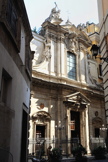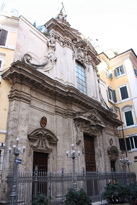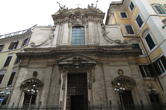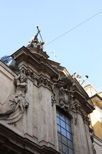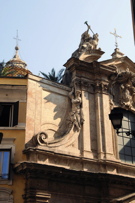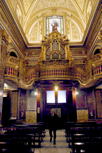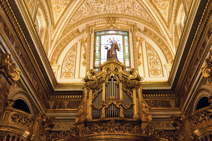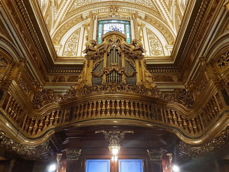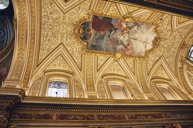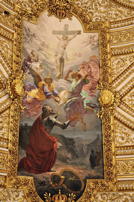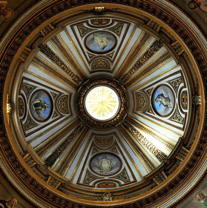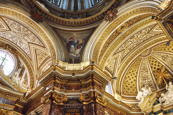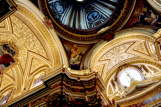Sant'Antonio dei Portoghesi is the 17th century national church of Portugal, which is also titular. It is located in the rione Campo Marzio. The dedication is to
St Anthony of Padua. The official title of the church is
Sant'Antonio in Campo Marzio.
For reference, a plan of the church is available
here.
The first church here was built 1440-1447 by
Cardinal Antonio Martin de Chavez, bishop of Porto, annexed to the hospice for Portuguese pilgrims. The hospice was founded in the 14th centure by
Guiomar da Lisbona, a Portuguese expatriate lady at Rome. The church was apparently built first, and was then dedicated to Our Lady and SS Vincent and Anthony of Egypt.
The original foundation was placed under the protection of the Portuguese ambassador to the Holy See. By the end of the 16th century it was decided that the premises were too cramped, and so the institution obtained several neighboring properties and set out to rebuild from 1624. The present church is a result of this, and was finished in 1638 by
Martino Longhi the Younger. Significantly, the new church was re-dedicated to St Anthony of Padua, who was originally Portuguese. In 1640 a large coat of arms of the new royal family of Portugal was added to the façade, and from 1657
Carlo Rainaldi and
Cristoforo Schor did further work. Rainaldi was responsible for the dome, and Schor for the apse and main altar.
With the Napoleonic occupation of Rome, the church and hospice were closed in 1799 and auctioned off. The property was restored to the Portuguese government in 1814, and the church was restored and reopened in 1842. There was another campaign of restoration finishing in 1873, when stained glass windows were inserted and the dome frescoes painted.
The pilgrimage hospice was converted into a secular college which is now called the Instituto Portoghese di Sant'Antonio in Roma or IPSAR, that still runs the church.
